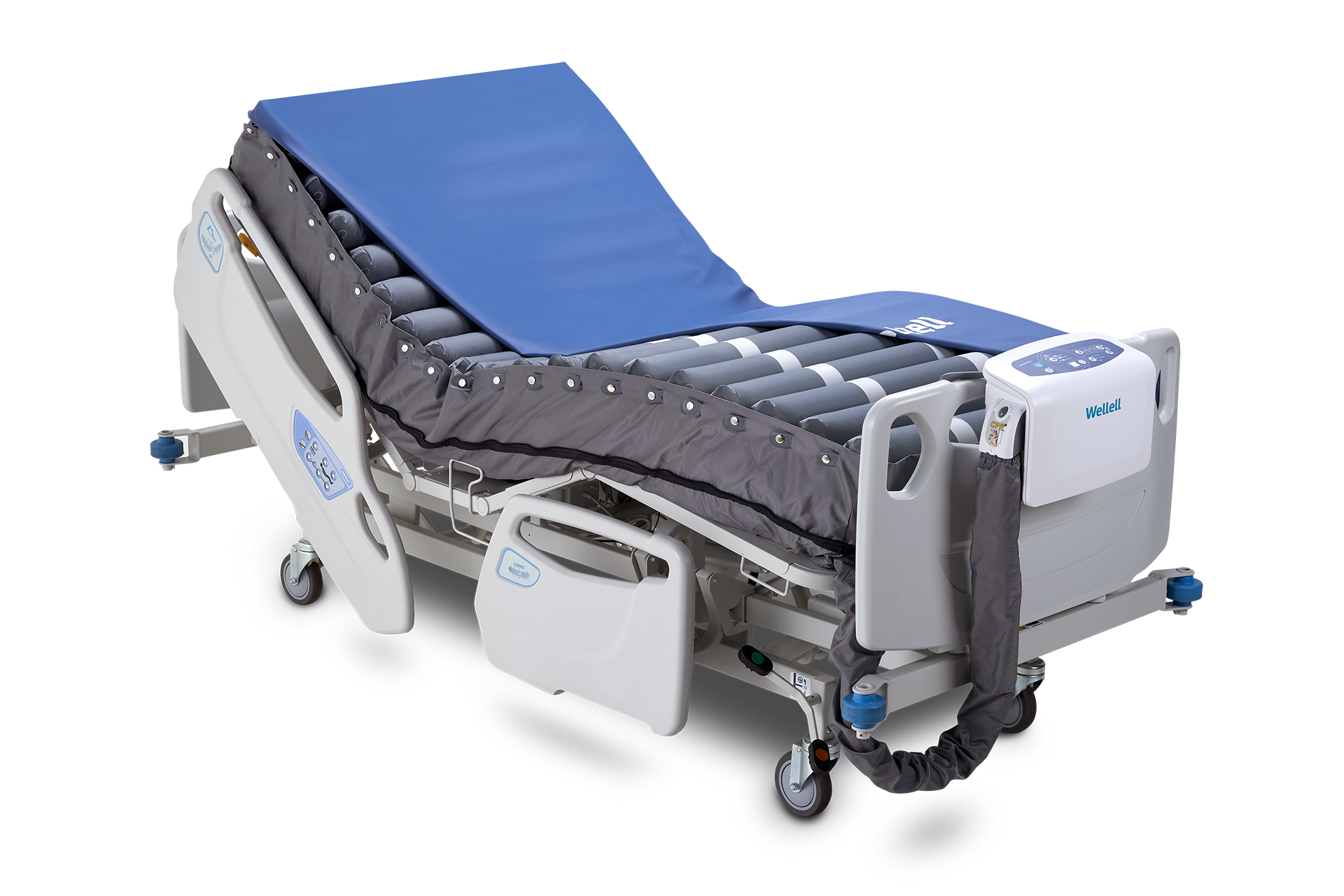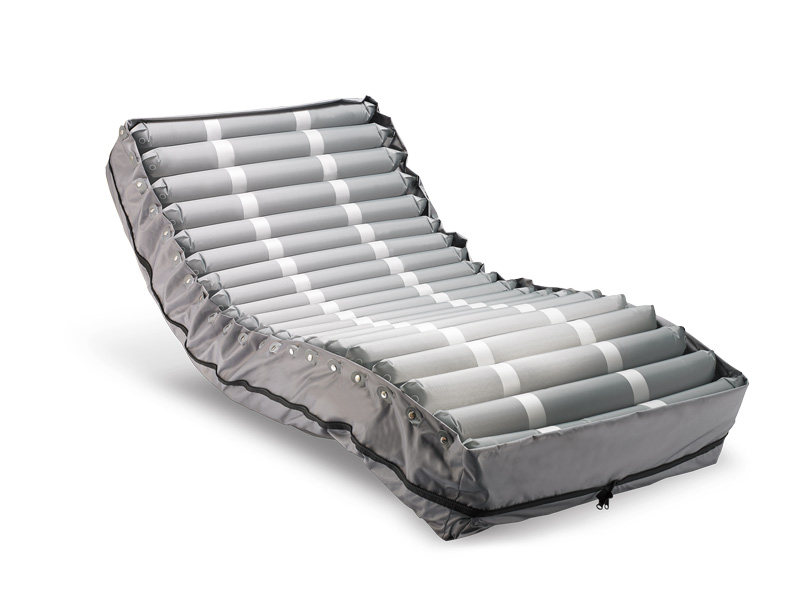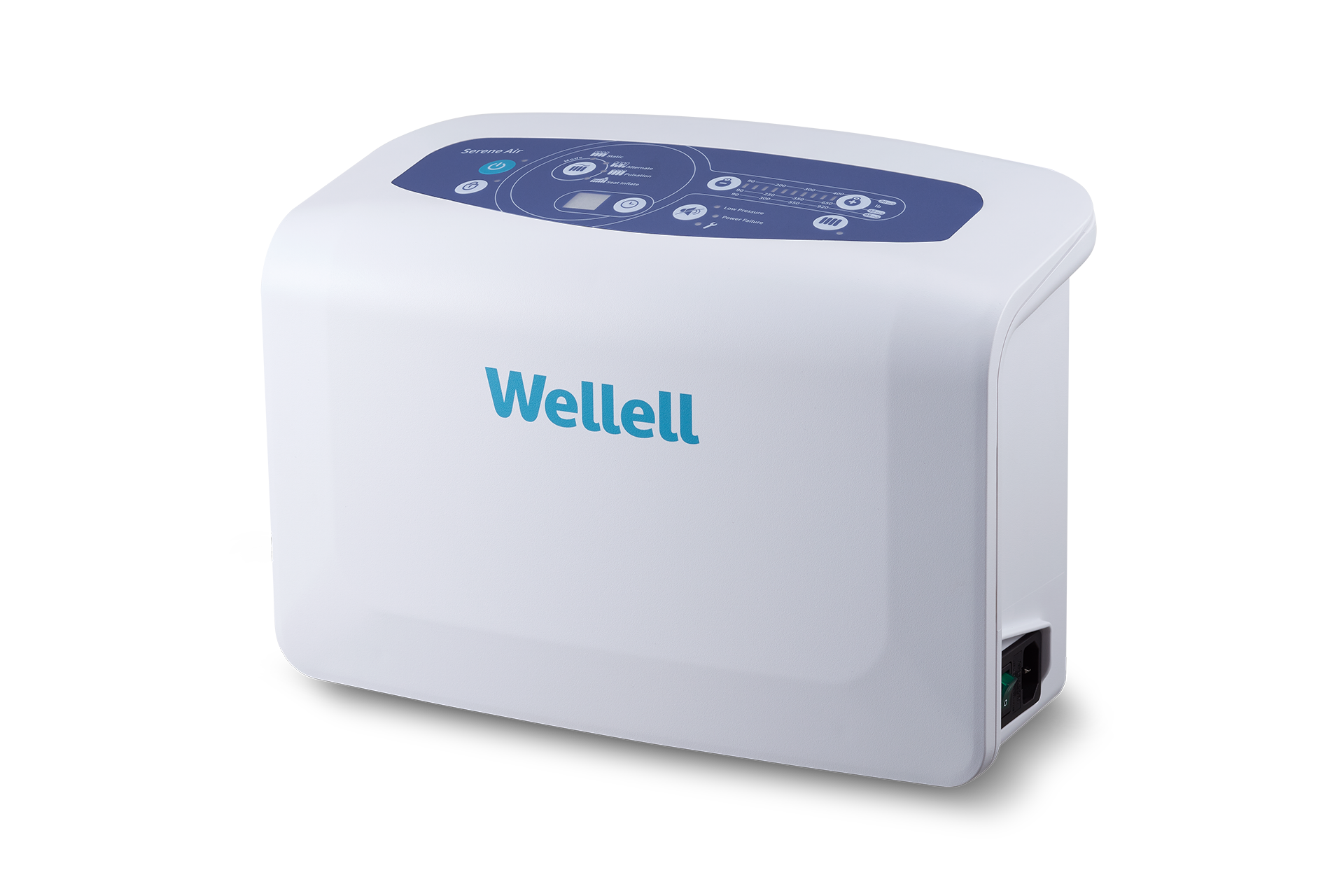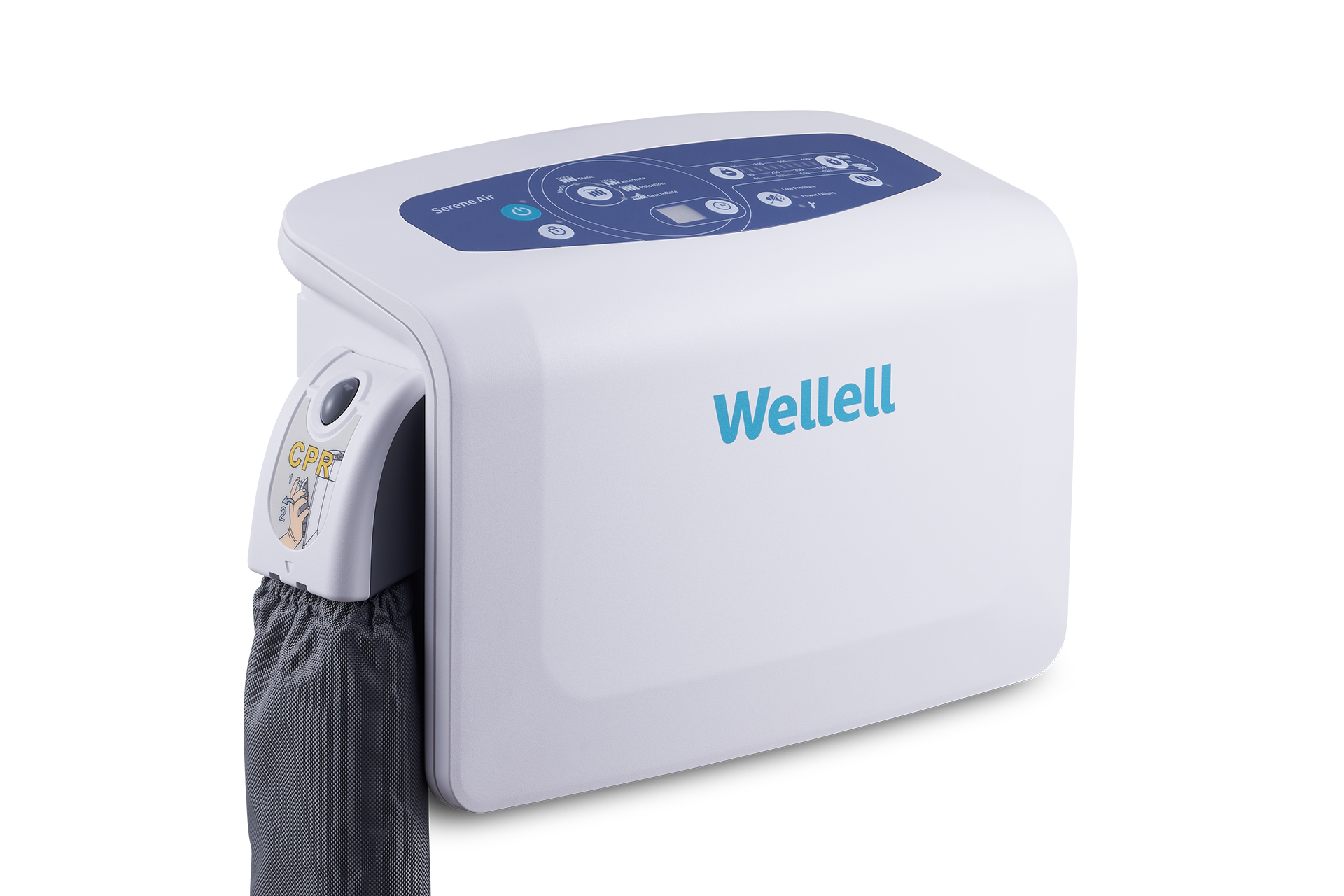Serene Air
Alternating Pressure Mattress with True Low Air LossFor High to Very High Risk
Pressure Injury Prevention Solution for Post-Acute Care — Gentler, softer pressure relief and skin moisture control for hypersensitive individuals.
Over 11% of NH residents develop PI. 50% are partial skin loss, pink wounds (S/C II), but can quickly deteriorate, requiring hospital readmission and 12 hospitalization days. Residents with PI are 41% less likely to be discharged and 39% more likely to be deceased during their stay.1-3
NH residents often develop moisture-related skin damage (from prolonged exposure to feces and urine) within 13 days after admission. 39% worsens into PI after 2 weeks. Lack of staff, resources, and PI-related training and knowledge significantly complicates patient care, leading to high PI risks.4, 5
Serene simplifies pressure injury prevention for hypersensitive patients by using softer, more gentle, firm presses to optimize pressure relief without damaging the skin and mattress surface ventilation to maintain proper skin moisture conditions. Ideal for postoperative and post-acute care.
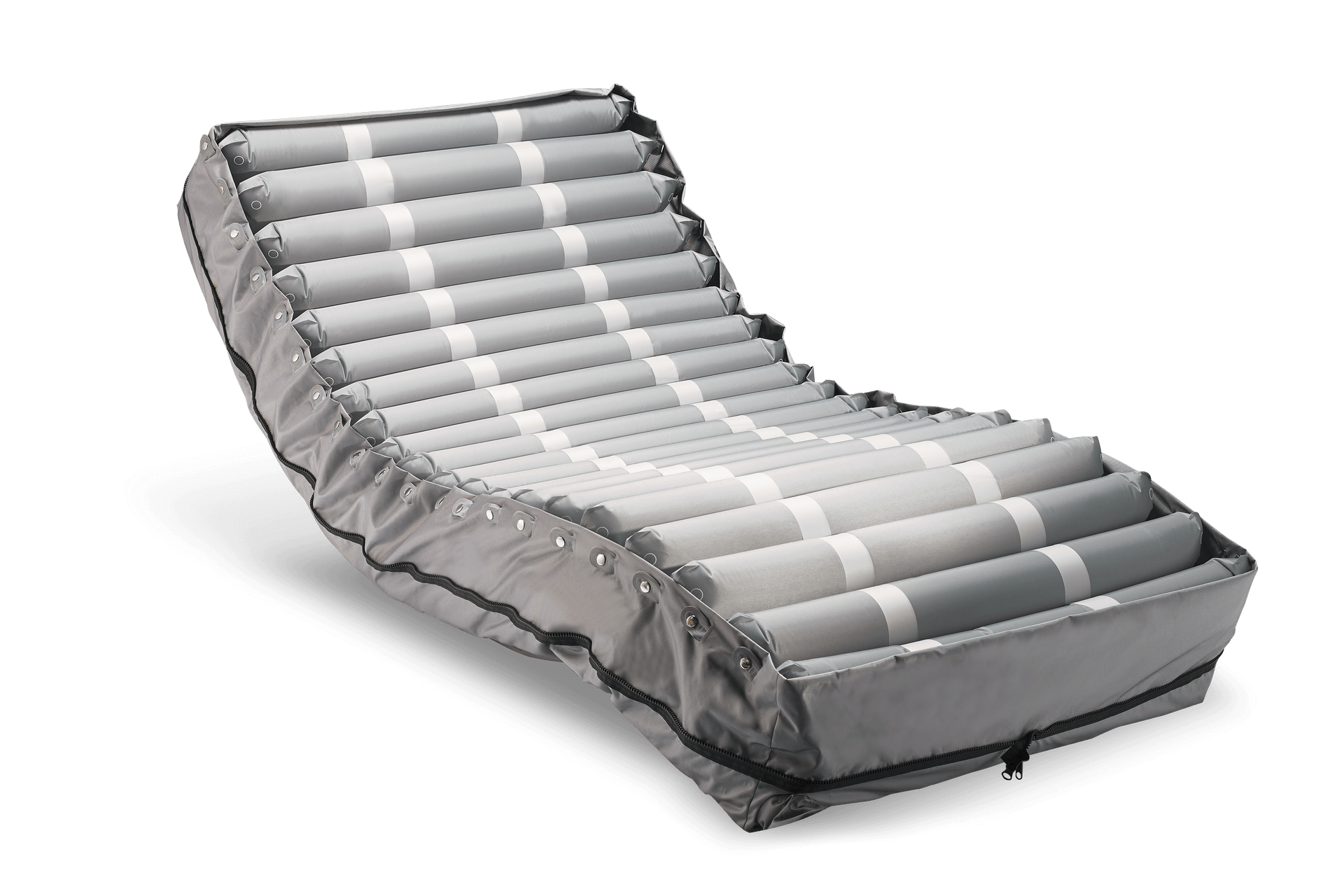
Gently improves blood circulation and comfort for hypersensitive patients
- Pulsation follows the clinical guideline’s suggestion to use soft, gentle, and firm presses to avoid tissue damage while improving pressure injury prevention.
- Blower (> 1,300 lpm) provides true low air loss and optimizes heat and moisture reduction at the interface.
- Blower system supplies air at 1,300 lpm, fully inflating the air mattress in under 2 minutes, minimizing support surface prep time.
- Foam pad beneath the air cells and seat inflation optimizes cushioning, pressure relief, and bottom out prevention.
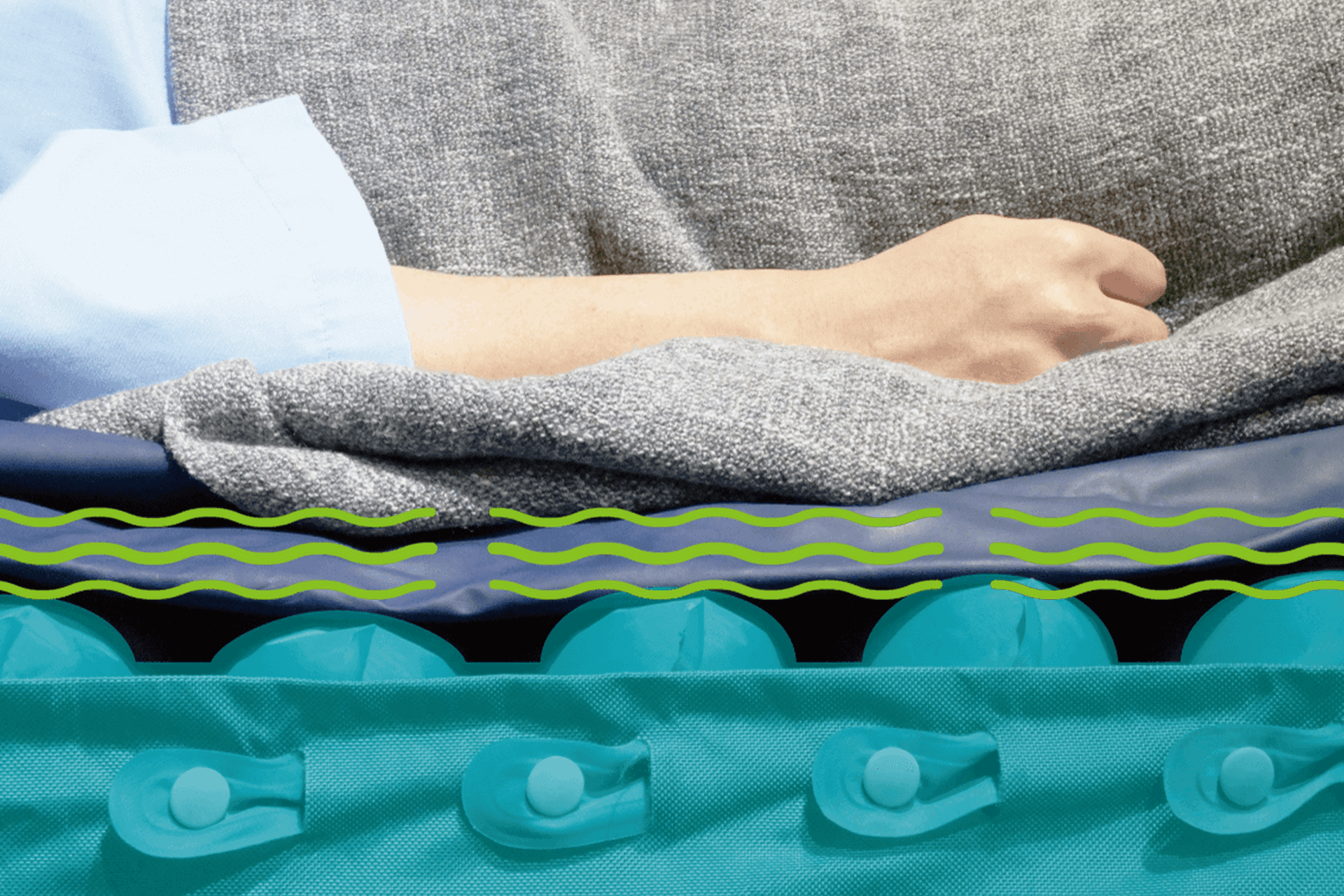
Slow, gentle, firm pressing improves blood circulation for patients uncomfortable with repositioning and alternating pressure.
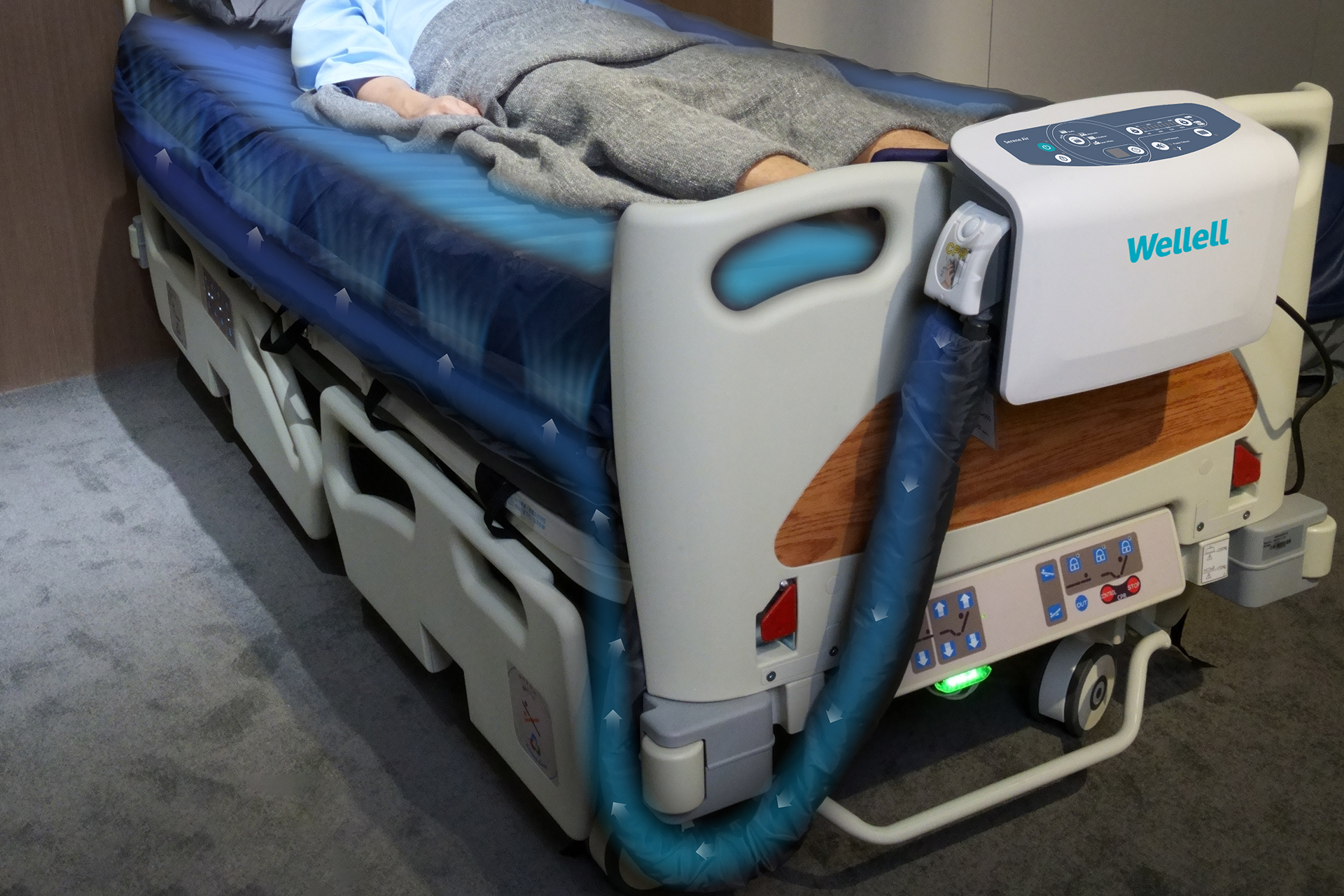
Blower system provides true low air loss to dissipate skin moisture and heat buildup, improving pressure injury prevention.
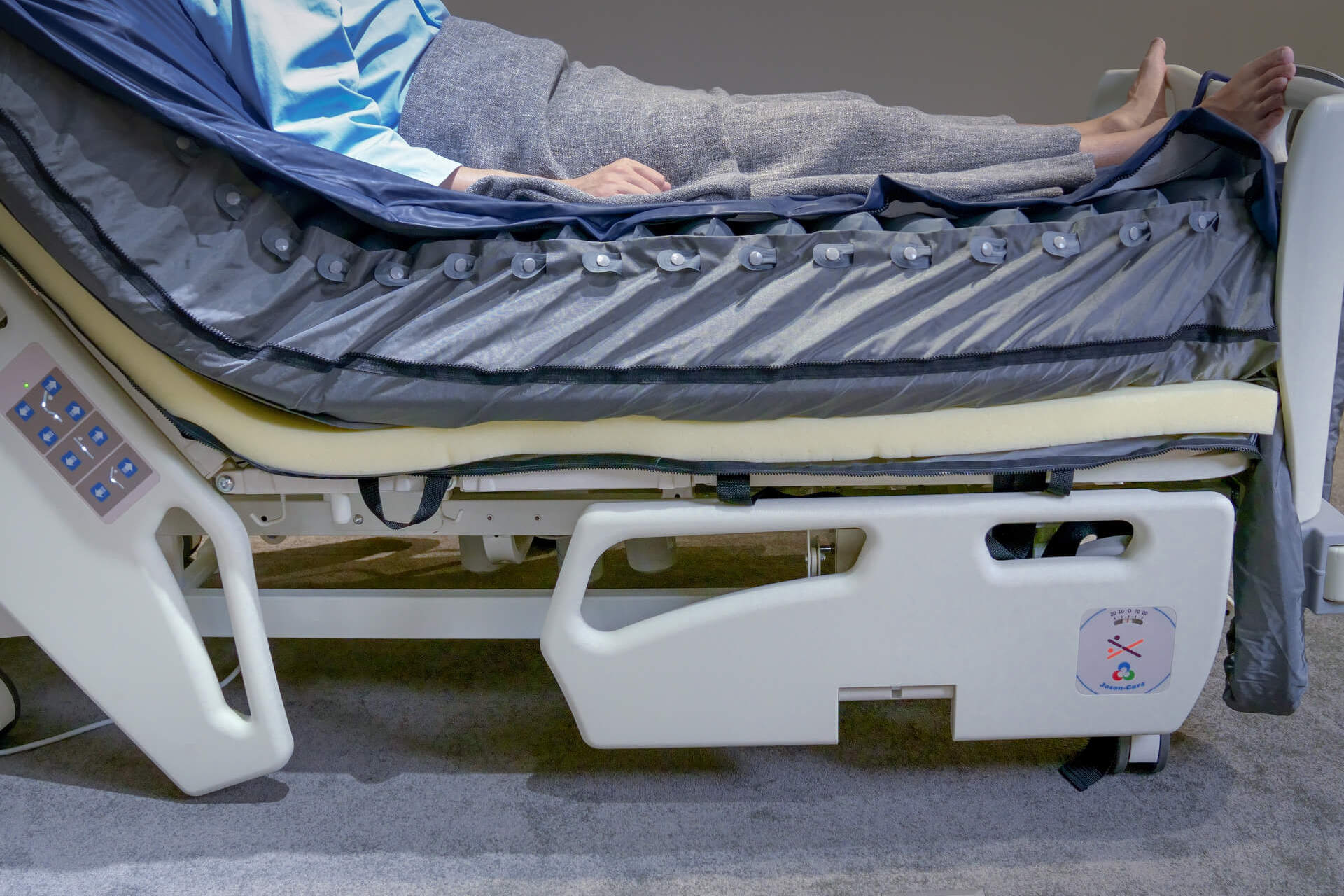
Triple-layer cushioning (air cells, foam, and seat inflation tuning) prevents bottom outs and improves safety and comfort.
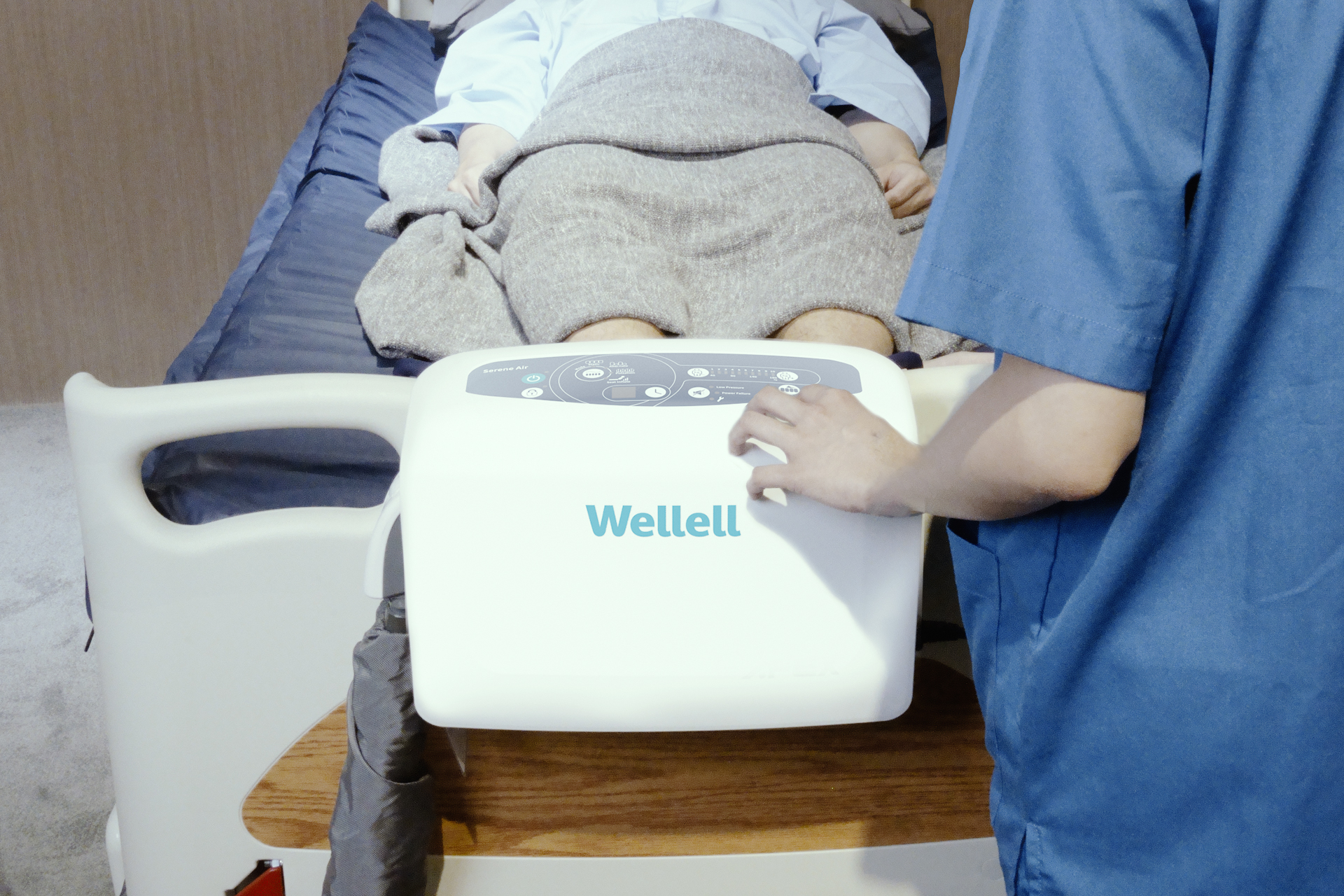
Blower system (> 1,300 lpm) fully inflates the mattress in under 2 minutes, optimizing workflow efficiency and care quality.
| Standard 200 | ||
|---|---|---|
| Mattress Dimension | 78.7 x 36 x 8 in | |
| Mattress Weight | 16.5 lb | |
| Maximum Patient Weight | 440lb | |
| Wide 200 | ||
|---|---|---|
| Mattress Dimension | 78.7 x 42 x 8 in | |
| Mattress Weight | 18.8 lb | |
| Maximum Patient Weight | 700 lb | |
| Wide 200 | ||
|---|---|---|
| Mattress Dimension | 78.7 x 48 x 8 in | |
| Mattress Weight | 21.0 lb | |
| Maximum Patient Weight | 990 lb | |

Gently improves blood circulation and comfort for hypersensitive patients
- Pulsation follows the clinical guideline’s suggestion to use soft, gentle, and firm presses to avoid tissue damage while improving pressure injury prevention.
- Blower (> 1,300 lpm) provides true low air loss and optimizes heat and moisture reduction at the interface.
- Blower system supplies air at 1,300 lpm, fully inflating the air mattress in under 2 minutes, minimizing support surface prep time.
- Foam pad beneath the air cells and seat inflation optimizes cushioning, pressure relief, and bottom out prevention.

Slow, gentle, firm pressing improves blood circulation for patients uncomfortable with repositioning and alternating pressure.

Blower system provides true low air loss to dissipate skin moisture and heat buildup, improving pressure injury prevention.

Triple-layer cushioning (air cells, foam, and seat inflation tuning) prevents bottom outs and improves safety and comfort.

Blower system (> 1,300 lpm) fully inflates the mattress in under 2 minutes, optimizing workflow efficiency and care quality.
All air cells are made from Thermoplastic Polyurethanes (TPU). It is highly resistant to breaking down when in contact with water (hydrolysis), soft to touch, and minimizes friction and noise during patient movements.
Reference
- Lo, Zhiwen J et al. “Clinical and economic burden of wound care in the tropics: a 5-year institutional population health review.” International wound journal vol. 17,3 (2020): 790-803. doi:10.1111/iwj.13333

